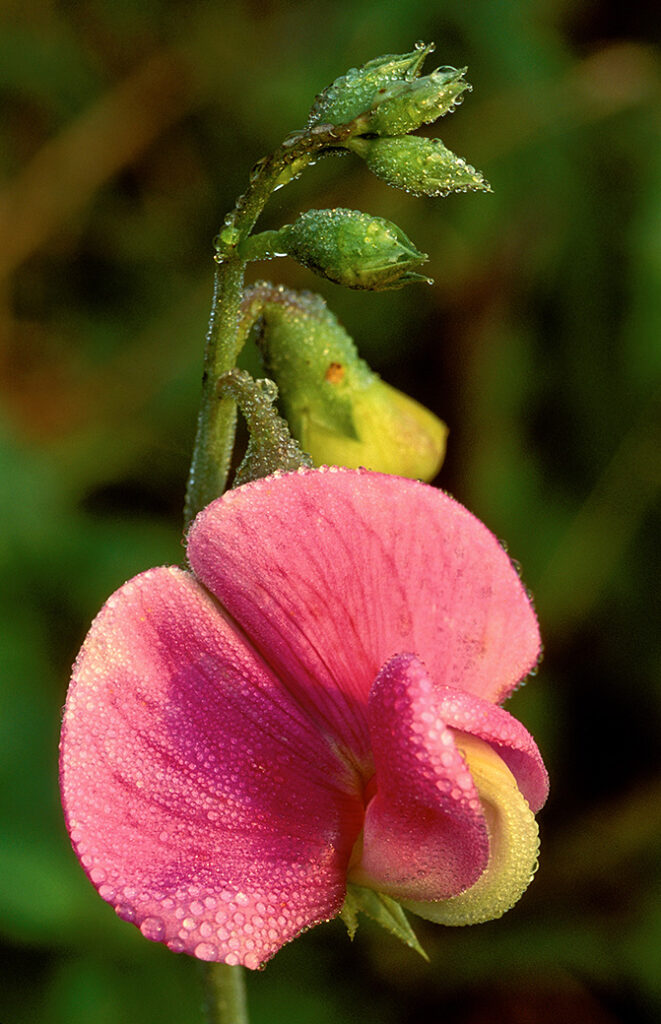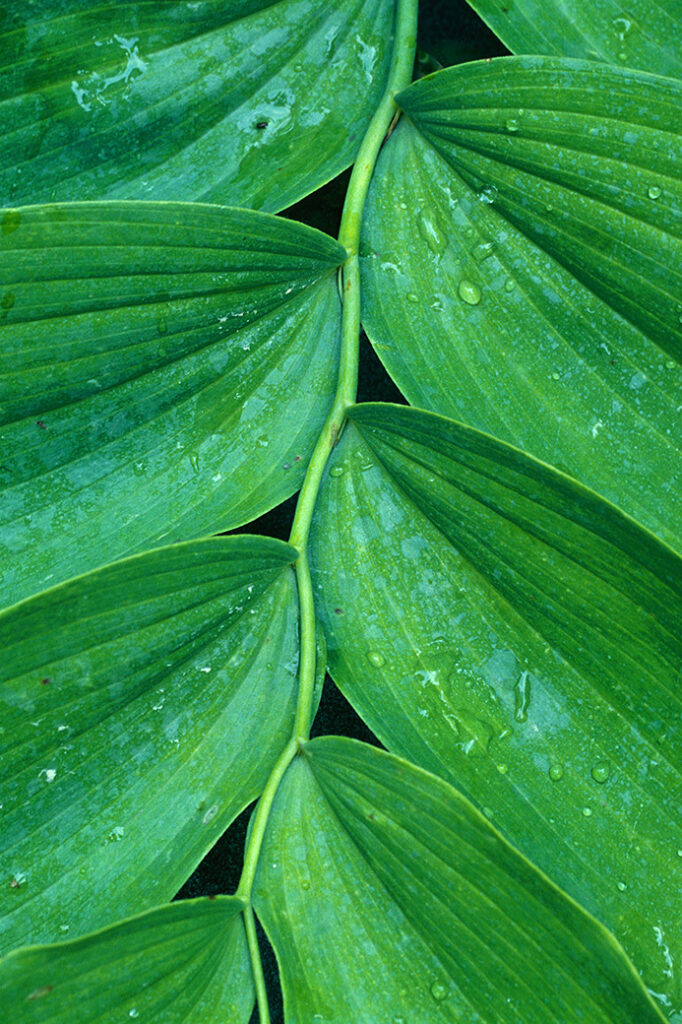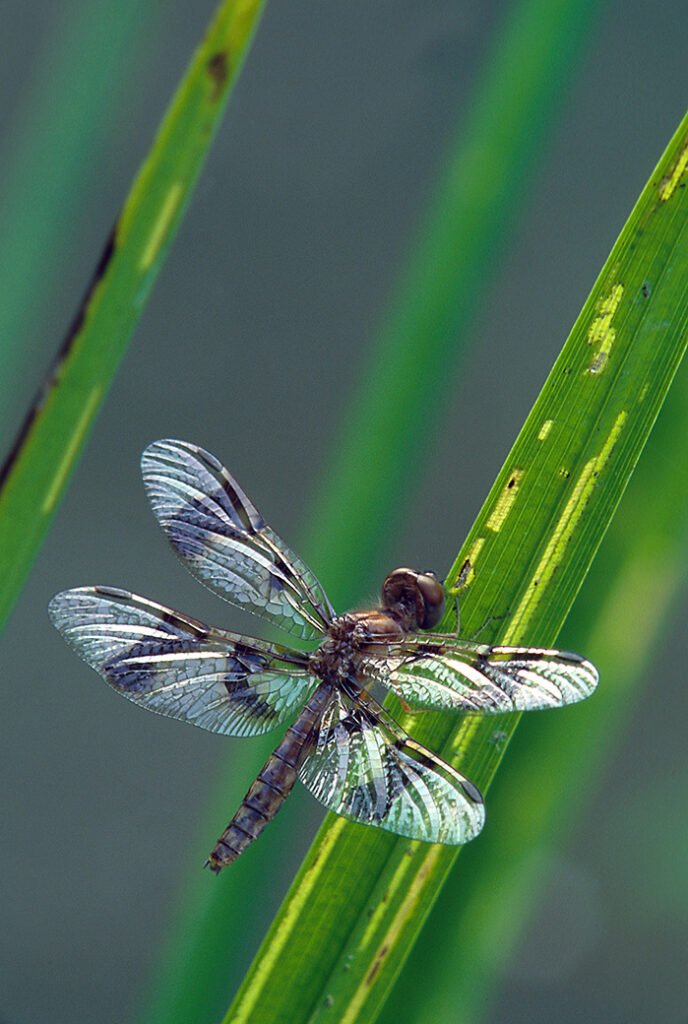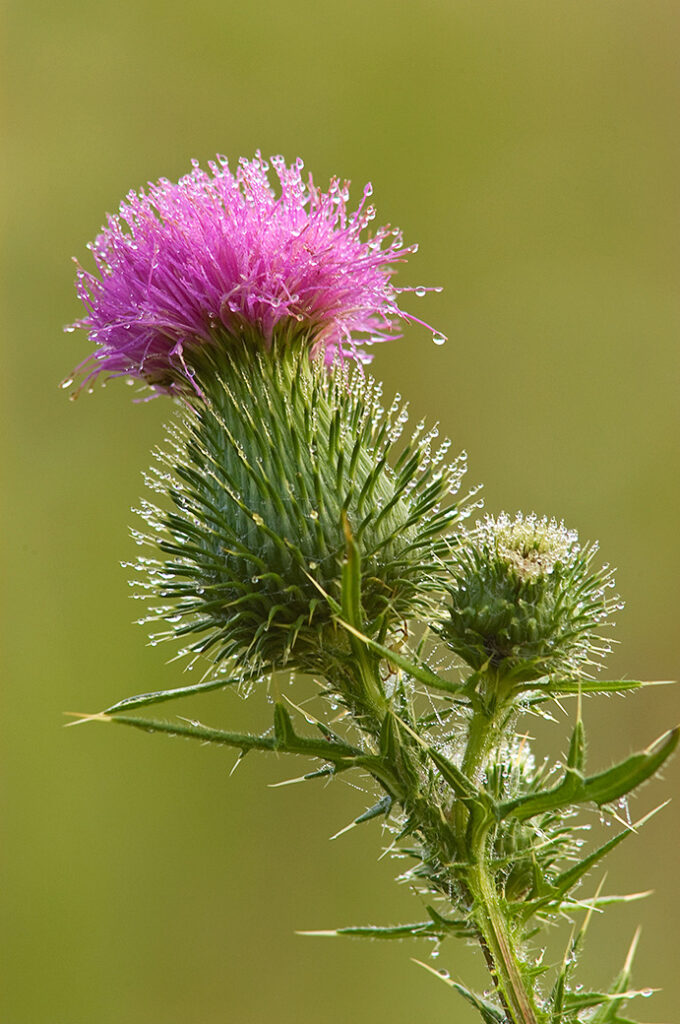Extension - It's Just Space
One great way to get some serious magnification is to put some space between the camera and the lens - the further from the film plane you move any lens, the closer that lens is focused. That’s actually how most lenses operate - by extending the lens’ elements further from the film plane, they focus closer. Imagine if you completely removed the lens and added a tube of extension between it and the camera body. What you would have is an extension tube.

Sweet Pea Blossom - 50mm lens, 25mm Extension
1/15 sec @ (marked) f:8

False Solomon Seal - 135mm, 25mm extension
1/8 sec @ (marked) f:11
Pros:
Extension tubes are ideal for macro work in the 1/4X to 1X or greater range. They are fairly inexpensive, relatively compact, and, because there are no glass elements, they don't optically alter the light coming through the lens - and they’re rugged - ideal for field work. Another advantage when working with extension tubes is that it’s very easy to calculate magnification rates: Simply divide the amount of extension by the focal length of the lens used. For example, if I’m using a 25mm extension tube with a 50mm lens, I’m shooting at 1/2X. That same extension tube on a 100mm lens gives me 1/4X. As you can see, the shorter the focal length, the more magnification when using the same amount of extension (but the closer you will have to physically be to your subject). Again, this calculation is based on a lens focused at infinity. Setting the lens to a closer focusing distance adds extension, which adds magnification and would need to be taken into consideration in the calculation.
Cons:
Extension tubes are great - but they’re not perfect. For one, there is a loss of light when using extension tubes - the more extension used, the more light lost. The focal length of the lens used also dictates how much light is lost - 50mm of extension of a 100mm lens loses more light than the same extension on a 300mm lens, and there is no easy way to calculate this loss due to the various characteristics of different lenses, even those of the same focal length. There is a good starting point, however: Adding 40% of the lens length will reduce your f-stop by 1 (40mm extension on a 100mm f4 lens will cut your f-stop by one stop - to f5.6) - extension of 100% of the lens length will reduce your f-stop by 2 stops (50mm extension on a 50mm lens - 2 stop reduction). The good news, if you're lucky and have extension tubes that are indexed to operate with your meter, is that your camera’s built-in meter takes this light loss into consideration when taking a light reading - the bad news is that you have to factor in the light loss when using an external hand-held meter or your extension tubes don't index with your camera's metering system. I personally have several "older" extension tubes that fit my "new" camera, but they don't incorporate the contacts necessary to communicate metering information to the camera (they don't communicate ANY information to my "new" camera! - not shutter speed - not aperture - just blank!) - but I am familiar with my equipment and know how much light loss I'm getting (and I'm shooting in manual, so my shutter speed and aperture are hard coded). If you're in the same boat, I would suggest running a few tests with your older equipment capable of metering through the extension tubes, using the in-camera meter to determine how much light is lost with various extensions on various lenses. Take a meter reading with just the lens, then, without changing the focus of the lens, add the extension and meter off of the same area. The difference in the meter readings is how much light is lost.
Lens Selection
When shooting close-ups, one thing that needs to be considered is working distance - how close you physically have to get to your subject. Working too close to your subject limits the lighting angle available to illuminate your subject, makes it more difficult to obtain an optimal shooting angle, makes live subject nervous (they may just decide to leave) - even convection from your warm body on a chilly morning can create enough wind turbulence to cause motion in your subject, creating blur in your final image. Yes, you can achieve 1:1 magnification by using 25mm extension on a 24mm lens, but your working distance is minimal - right on top of your subject - using a longer lens, say 100mm with 100mm extension, gives the same magnification, but with considerably more working distance and a more selective background (narrower field of view). Because you're physically further away from your subject, lower compositions from lower angles become easier, options for lighting are more plentiful, and your subject will not feel quite so intruded upon - plus, there's less chance of "bumping into" a part of your composition which could ruin the whole image.

Dragonfly - Nikkor 300mm, 25mm Extension
1/15 sec @ (marked) f:8

Dragonfly - Nikkor 300mm, 25mm Extension
1/8 sec @ (marked) f:8
